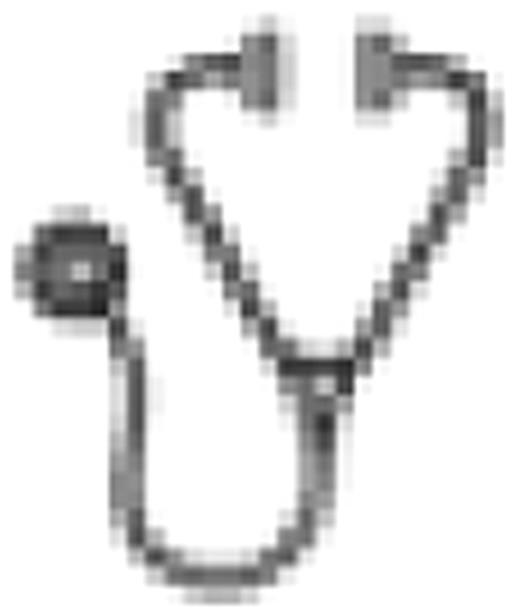Abstract
Abstract 357
Treatment of CML with imatinib of 400 mg can be unsatisfactory. Treatment optimization is warranted. The German CML-Study group has therefore conducted a randomized study comparing imatinib 800 mg vs 400 mg vs 400 mg + IFN. A significantly faster achievement of MMR at 12 months has been observed with imatinib 800 mg in a tolerability adapted manner and MMR by 12 months has been found to translate into better overall survival. Since stable CMR has been associated with durable off-treatment remissions we sought to analyse the impact of tolerability-adapted imatinib 800 mg on CMR and survival. Standardized determinations of molecular response and evaluation of its impact on outcome are goals of CML-Study IV. CMR4 is defined as a BCR-ABL/ABL ratio of <0,01 on the International Scale. From July 2002 – April 30, 2009 1022 newly diagnosed patients with CML in chronic phase were randomized, 1012 were evaluable (338 with imatinib 800 mg, 324 with imatinib 400 mg, 350 with imatinib plus IFN). Median observation time was 40 months. The median average daily imatinib doses were 628 mg in the 800 mg arm and 400 mg in the 400 mg based arms. The actual median daily doses in the 800 mg arm per 3-months periods were: 555 mg, 737 mg, 613 mg, 600 mg, and 600 mg thereafter, reflecting the run–in period with imatinib 400 mg for 6 weeks in the first period and the adaptation to tolerability from the third 3-months period onwards. Median daily imatinib doses in the 400 mg arms were 400 mg throughout. Adaptation of imatinib dose in the 800 mg arm according to tolerability is reflected by similar higher-grade adverse events rates (WHO grades 3 and 4) with all treatments. Significantly higher remission rates were achieved with imatinib 800 mg by 12 months. The cumulative incidences of CCR by 12 months were 63% [95%CI:56.4-67.9] with imatinib 800 mg vs 50% [95%CI:43.0-54.5] with the two 400 mg arms. The cumulative incidences of MMR by 12 months were 54.8% [95%CI:48.7-59.7] with imatinib 800 mg vs 30.8% [95%CI:26.6-36.1] with imatinib 400 mg vs 34.7% [95%CI:29.0-39.2] with imatinib + IFN. The cumulative incidences of CMR4 compared with the MMR incidences over the first 36 months are shown in Table 1. Imatinib 800 mg shows superior CMR4 rates over the entire 36 months period, CMR4 is reached significantly faster with imatinib 800 mg as compared to the 400 mg arms. The CMR4 rates reach 56.8% by 36 months [95%CI:49.4-63.5] as compared to 45.5% with imatinib 400 mg [95%CI:38.7-51.0] and 40.5% with imatinib plus IFN [95%CI:34.6-46.3]. Most patients have stable CMR4 over the entire period.
| Time after start of treat-ment (months) . | Cumulative incidences . | |||||||||
|---|---|---|---|---|---|---|---|---|---|---|
| MMR(%) . | CMR4 (%) . | |||||||||
| IM400 n=306 . | D . | IM800 n=328 . | D . | IM400 +IFN n=336 . | IM400 n=306 . | D . | IM800 n=328 . | D . | IM400 +IFN n=336 . | |
| 6 | 8.6 | 9.5 | 18.1 | 9.7 | 8.4 | 3 | 0.7 | 3.7 | 1.3 | 2.4 |
| 12 | 30.8 | 24.0 | 54.8 | 20.1 | 34.7 | 7.5 | 12.3 | 19.8 | 7.4 | 12.4 |
| 18 | 50.3 | 18.1 | 68.4 | 14.3 | 54.1 | 21.2 | 12.2 | 33.4 | 9.8 | 23.6 |
| 24 | 63 | 13.0 | 76.0 | 13.2 | 62.8 | 30.7 | 12.3 | 43 | 13 | 30.0 |
| 36 | 79.3 | 2.3 | 81.6 | 10.9 | 70.7 | 45.5 | 11.3 | 56.8 | 16.3 | 40.5 |
| Time after start of treat-ment (months) . | Cumulative incidences . | |||||||||
|---|---|---|---|---|---|---|---|---|---|---|
| MMR(%) . | CMR4 (%) . | |||||||||
| IM400 n=306 . | D . | IM800 n=328 . | D . | IM400 +IFN n=336 . | IM400 n=306 . | D . | IM800 n=328 . | D . | IM400 +IFN n=336 . | |
| 6 | 8.6 | 9.5 | 18.1 | 9.7 | 8.4 | 3 | 0.7 | 3.7 | 1.3 | 2.4 |
| 12 | 30.8 | 24.0 | 54.8 | 20.1 | 34.7 | 7.5 | 12.3 | 19.8 | 7.4 | 12.4 |
| 18 | 50.3 | 18.1 | 68.4 | 14.3 | 54.1 | 21.2 | 12.2 | 33.4 | 9.8 | 23.6 |
| 24 | 63 | 13.0 | 76.0 | 13.2 | 62.8 | 30.7 | 12.3 | 43 | 13 | 30.0 |
| 36 | 79.3 | 2.3 | 81.6 | 10.9 | 70.7 | 45.5 | 11.3 | 56.8 | 16.3 | 40.5 |
In summary, superior CMR4 rates are achieved with high-dose imatinib adapted to good tolerability, and more patients in the tolerability-adapted 800 mg arm have stable CMR4 qualifying for treatment discontinuation as compared to the 400 mg based arms. With improved application imatinib remains first choice for early CML.
Koschmieder:Novartis: Membership on an entity's Board of Directors or advisory committees, Research Funding; BMS: Membership on an entity's Board of Directors or advisory committees. Schnittger:MLL Munich Leukemia Laboratory: Employment, Equity Ownership. German CML-Study Group:Deutsche Krebshilfe: Research Funding; Novartis: Research Funding; Roche: Research Funding; BMBF: Research Funding; Essex: Research Funding.

This icon denotes an abstract that is clinically relevant.
Author notes
Asterisk with author names denotes non-ASH members.

This feature is available to Subscribers Only
Sign In or Create an Account Close Modal